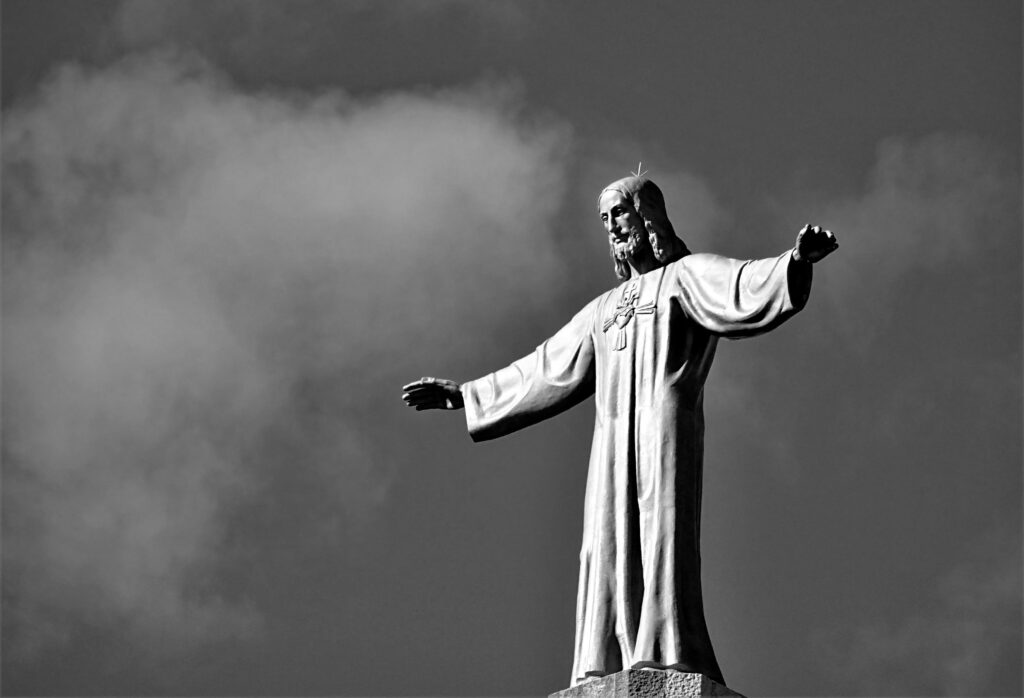The life and teachings of Jesus Christ have captivated the hearts and minds of millions for centuries. While Western historical records provide limited insight into his early years, an intriguing theory proposes that Jesus may have received education and spiritual training in Indian monasteries. This hypothesis, supported by various strands of evidence, sheds light on Jesus’ potential exposure to Eastern philosophies and teachings. In this article, we will delve into the fascinating evidence suggesting Jesus Christ’s education in Indian monasteries, exploring its implications and the historical and social context surrounding it.
I believe the real Jesus was radical – a herectic. This is why the Romans killed him. This is why Christians were hunted after his death. – Jack Rourke
Could Young Jesus have Traveled East?
To understand the plausibility of Jesus’ education in Indian monasteries, we must examine the historical context of the time. During the 1st century, a vibrant cultural exchange occurred along the Silk Road, a network of trade routes connecting the East and West. This passageway facilitated the exchange of ideas, philosophies, and spiritual practices between different civilizations, including China, India, Persia, and the Roman Empire, where Jesus lived.
The trade routes connecting the Roman Empire and India would have allowed for the exchange of goods, ideas, and knowledge. It is plausible that Jesus, being exposed to diverse cultures and philosophies, incorporated elements of Eastern teachings into his own message.
Another piece of evidence supporting Jesus’ education in Indian monasteries lies in the possibility of his travels to the East during his “lost years.” The Gospels provide limited information about Jesus’ life from ages 12 to 30, leaving an intriguing gap. Of interest are historical records of the Coptic church in Egypt which detail the company Jesus kept and some of his reported early travels. But it is the monastic records found in Kashmir and Tibet which hold the most intriguing narrative. They speculate that Jesus embarked on a journey of self-discovery, venturing into the distant lands of the East, including India, where he preached and studied with spiritual masters.
The most notable text that indicates a link between Jesus and India, at least from a Western point of view, is the Gospel of Thomas, discovered in 1945 in Nag Hammadi, Egypt. This text contains sayings attributed to Jesus, some of which resemble the teachings of Eastern philosophies. Additionally, the works of several early Christian scholars, such as Clement of Alexandria and Origen, also mention Jesus’ interaction with Indian philosophers.
Jesus’ Teachings and Eastern Spiritual Masters
Evidence supporting the theory of Jesus’ education in Indian monasteries might also lie in the remarkable similarities between his teachings and those of ancient Indian spiritual traditions. Both emphasize compassion, love for all beings, and the pursuit of inner peace. Jesus’ teachings on nonviolence, detachment from material possessions, and the importance of self-realization align closely with principles found in Eastern philosophies. Looking beyond similarities in spiritual philosophy, what is also compelling is the descriptions of Jesus’ alleged actions in India and Persian as they closely resemble those depicted in the Bible.

Jesus thumbed his nose at the orthodoxy! He literally stated, “Behold I bring a new Covenant.” Jesus also whipped the money changers out of the temple and chastised the religious caste system. He taught, “Blessed are the poor in spirit, for theirs is the kingdom of heaven. Blessed are those who mourn, for they will be comforted. Blessed are the meek, for they will inherit the earth. Blessed are those who hunger and thirst for righteousness, for they will be filled.” He did not say, “Blessed are the Pharisees and Sagisees in their fancy robes”. In fact, Jesus railed against their pomposity. We can see this clearly when Jesus taught, “When you pray, do not be like the hypocrites, for they love to pray standing in the synagogues and on the street corners to be seen by men … but when you pray, go into your room, close the door and pray to your father who is unseen”.
I believe the real Jesus was radical – a heretic. This is why the Romans killed him. This is why Christians were hunted after his death.
The Roman Empire was polytheist. When the Romans conquered a civilization they absorbed that country’s religion allowing the locals to keep their culture under Roman authority. But the Jews were monotheists. This is what made them so difficult to conquer. Rome dealt with the Jews by asserting authority over the Temple leveraging the religious class against the common folk to maintain order. This worked for a while. Until Jesus came along with his “kingdom of heaven is within” message.
Jesus taught all are equal under God and the individual’s body is the Temple within which is the holiest of the Holy. This is a very Eastern concept. But, also a dangerous one, as people who realize God within are no longer easily controlled by an external one that supposedly lives in a brick-and-mortar temple whispering to an elite few who do the will of Roman occupiers.
Is it a coincidence that the Jesus described in Eastern manuscripts also got in trouble for preaching against privilege and the religious establishment throughout India and Persia? These same texts also indicate Jesus’ life was threatened several times causing him to flee to the next city and the next while despite being recognized as a healer and holy prophet. If these accounts are true they add nuance to the biblical account of Jesus’ life. Could it be that when Jesus’ life and message finally got him crucified in Judea, it was an outcome not totally unexpected due to his character and convictions? It is fascinating to imagine that Jesus was not a pacifist or a victim. But instead, he was a man with deep integrity and spiritual passion. A true agent of change, who was willing to die as he lived – fully liberated and committed to what he knew to be right.
Could Redefining Jesus’ Past Change Our Future
While the theory that Jesus Christ was educated in Indian monasteries is more than speculative, the evidence supporting this notion raises intriguing questions about the potential influences on his teachings and the motives behind concealing the historical day-to-day truths of the life of Jesus.
It is important to stipulate that the theory of Jesus’ travels during his unaccounted-for years between 12 and 29 years of age remains a subject of debate among mainstream scholars. But if it were true that Jesus did travel the silk road as religious traditions in Tibet, Afghanistan, Nepal, Pakistan, and India accept as fact, then the West would need to re-examine not only the history of Western culture but also the dominion of the Roman Catholic church and its role obscuring what Jesus actually stood for.
Regardless of the validity of this theory, the core message of Jesus’ teachings continues to resonate with millions around the world, transcending cultural boundaries. The exploration of this hypothesis provides a unique perspective on the interplay between different spiritual traditions and the universality of profound wisdom. Ultimately, the influence of Jesus Christ’s life and teachings endures, inspiring people of diverse backgrounds and beliefs to seek love, compassion, and inner transformation. ♥






